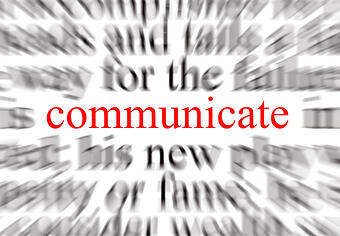 Talk to any respected recruiter and they’ll share discouraging narratives about how lousy recruiters tarnish their profession and its process. Although there aren’t any formalized recruiter ethics and standards that are universally followed, this doesn’t mean it's beyond anyone to provide candidates with honesty, integrity, and open communication during every interaction.
Talk to any respected recruiter and they’ll share discouraging narratives about how lousy recruiters tarnish their profession and its process. Although there aren’t any formalized recruiter ethics and standards that are universally followed, this doesn’t mean it's beyond anyone to provide candidates with honesty, integrity, and open communication during every interaction.
Poor choices by bad recruiters impact every party involved. Crucial objectives behind the entire trade such as improving candidate experience, fostering a great company reputation, and building an honorable brand can be easily compromised.
This post focuses on a series of problems related to applicant rejection and provides humble solutions to bad communication practices occurring from post application dialogues all the way to final hiring decisions.
Nearly everyone who’s applied to college knows what it’s like to receive a rejection letter. Typically you know right away because the envelope, containing only one piece of paper, is light and airy. You also know how it feels to receive absolutely no feedback regarding why you didn’t make the cut. I am not saying that universities are obligated to take the time to craft a personalized letter outlining in great detail their final decision; surely they don’t have time for that.
This holds true even for busy recruiters: candidates that they’ve had no contact with beyond reviewing their CV and cover letter can’t warrant a detailed explanation. Yet there are two things to consider here: imagine you never receive a response from the university; or imagine you actually had a chance to interview with an admissions officer, but when they decided to pass their explanation was generic.

If improving candidate experience truly is something you value, then you’ll enjoy seeing how our recruiters and hiring manages at Entelo humanize the communication process. We always inform candidates of our decisions—and craft personalized messages for candidates who have gone through an interview.
1) Post Application Rejections
Even if your response is generic, most candidates who didn’t make it to a phone screen will appreciate your acknowledgment of their application. Here’s a sample of an e-mail to send:
Hi Candidate,
Thank you for your interest in our Account Executive - Inside Sales position.
Unfortunately, we have decided not to proceed with your candidacy for this current opening at Entelo. We will keep your application on file and will contact you should we have another opportunity in the future that might be a better fit.
Thanks again for your interest in Entelo and we wish you luck in your search.
Regards,
Recruiter
2) Post Interview Rejection (typically after a phone screen)
This next message is time sensitive. Try your best to get back to the candidate within one week after your interaction. If the position is part of a multiple-hire campaign, for example, on-going monthly hiring for sales reps, sometimes recruiters wait approximately a month or two to send this out. This allows time to compare the candidate to others vying for the position.
Hi Candidate,
I enjoyed our call the other day and appreciate the time you spent with me.
I wanted to follow up with you and let you know we will not be moving forward with you. Although you have an interesting background, we do not think it is the best fit for the roles we have open at this time.
We will keep your information on file and will contact you should we have another opportunity in the future that might be a better fit. Please let me know if you have any specific questions.
Thanks again for your interest in Entelo and we wish you luck in your search.
Regards,
Recruiter
Note that this message encourages the candidate to follow up with the recruiter. Being open to feedback goes a long way in helping candidates understand their performance, background, and potential shortcomings. It also goes a long way in keeping your brand and reputation strong.
3) Post Second Interview Rejection
Usually this message is reserved for candidates who have gotten one step further along in the process. These are more tailored to a specific candidate’s attributes.
Hi Candidate,
Thanks so much for taking the time to meet with us last week.
I connected with the team and unfortunately, we've decided we are not going to move forward with you on this role. It ultimately came down to needing a bit more experience.
We will keep your information on file and will contact you should we have another opportunity in the future that might be a better fit. Please let me know if you have any specific questions.
Thanks again for your interest in Entelo and we wish you luck in your search.
Regards,
Recruiter
With respect to this example, mentioning the candidate’s experience is a reflection of earlier concerns about their background. Mentioning this earlier in the phone interview (whether by your or the candidate) gives the candidate time to address these issues during the face-to-face interview. You can make this message as detailed as you like; being frank helps to illuminate the decision-making process. Just do your best to be personal, friendly, and show that you’re open to dialogues.
4) Post Multiple Interviews Rejection
This one is simple: there’s no need to write an e-mail, just pick up the phone and call the candidate. This makes for a humanized interaction where both parties can articulate their ideas and expectations.
Conclusion: Creating Trust, Proving You Value Communication, & Getting Feedback
If you follow these steps for each one of your interactions you’ll show people they’re people—not just a transaction. One tip to remember is once you’ve decided to start the interview process (whether on the phone or in person), make sure you’re very clear about how the interview process will be conducted. Let them know what to expect upfront.
Lastly, when you make that call to a candidate who has spent time coming to your office— sitting down for hours at a time with multiple team members—don’t forget to ask them share their feelings on how you conducted the hiring process. What did they like? What should change?
What have your experiences been with keeping communication lines open throughout the hiring cycle? Let us know in the comments!

